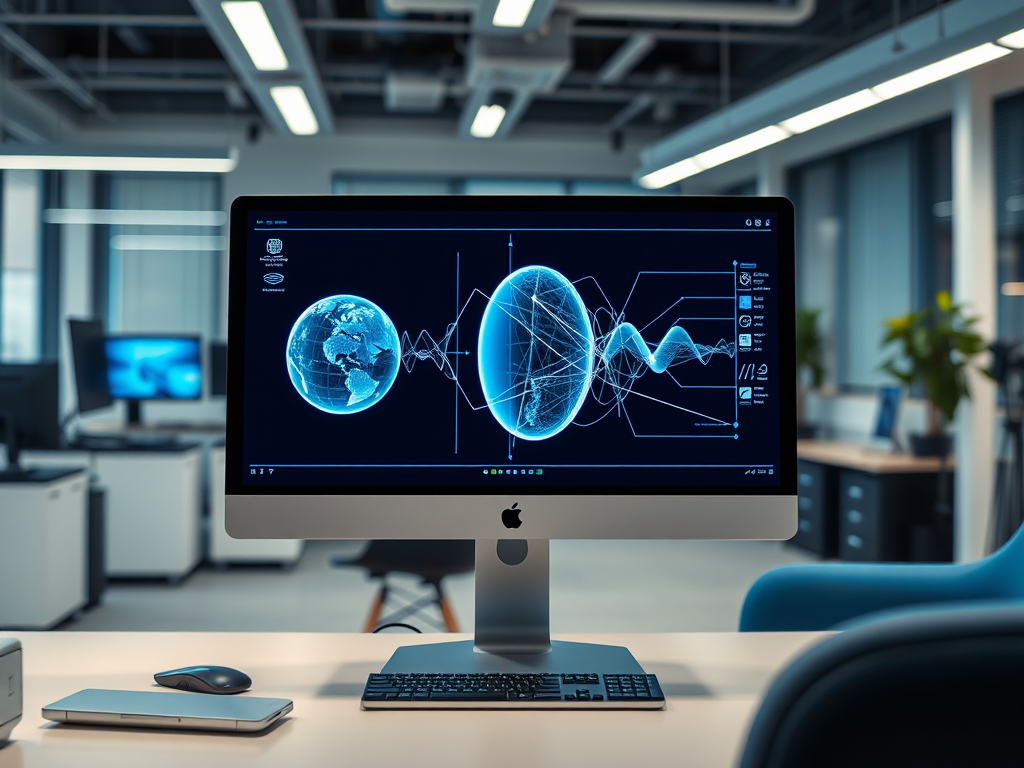From the perspective of software development, the transformation of the image editing sector has been nothing short of remarkable since the introduction of deep learning. Not only has the quality of edits vastly improved but the creative possibilities that deep learning enables are simply astounding. Software tools are now capable of performing complex tasks autonomously thanks to the use of deep learning algorithms. This advancement allows users to concentrate on their artistic goals instead of getting distracted by technical details. Perhaps the most intriguing aspect of deep learning in image editing stems from its ability to construct breathtaking visuals seemingly out of nowhere. An example of such software is Deep Nude, which edits images by synthesizing realistic outputs from simple inputs. It is amazing how such a sophisticated approach to image editing is both a delight for professionals and offers new opportunities to amateur enthusiasts.
For anyone keen on image editing, knowing how deep learning works with the software is a necessity. The first step begins with deep learning with neural networks, which is the core of almost all deep learning algorithms. These neural networks take apart images and look at numerous details in them. Only at this level, can features like colors, shape, and texture be manipulated. Thus, as is apparent, deep learning considerably increases the level of automation possible with previously semi-automated processes, such as selection, enhancement, and rendering.
By researching this matter further, we will be able to identify the important distinctions that differentiates deep learning from conventional editing practices.
The Basics of Image Editing

Grasping the conventional methods of image editing is advanced preparation before delving into the combination of deep learning and image editing. The contrast, brightness, and saturation adjustments are all done manually. Filters and presets generated by users are used by photographers for enhancing images where they want certain changes to be done. Similarly, layers are used to edit images in groups without altering the main image and those layers can be fine-tuned. Getting a perfect image through this method requires time and effort which are very difficult to acquire. In today’s world where technology is ever-evolving, there’s a dire need for faster, readily available, and efficient methods owing to greater demands for images that have been edited.
- Manual adjustments such as brightness, contrast, and saturation
- Application of filters and presets for quick enhancements
- Layer-based editing techniques for precise control
How Deep Learning Revolutionizes Image Editing

The impact of deep learning on the image editing world is incredibly impactful. Cutting-edge algorithms utilized in computer vision solve problems using the power of neural networks which shift the paradigms of editing possibilities. As an example, convolutional neural networks (CNNs) analyze images at great depth, enabling accurate object recognition and segmentation. People no longer have to invest a lot of time and effort into manual tasks because technological innovations allow them to do everything at an astonishing pace. Now, even the most complex of tasks can be tackled with ease, resulting in astonishing outcomes to both laymen and professionals.
- Enhanced accuracy in object detection and recognition
- Significantly increased speed and efficiency for processing large images
- The capability to apply complex artistic styles with ease
Popular Applications of AI-Powered Image Editing
Numerous advanced tools use deep learning technology to facilitate and improve image manipulation. These tools not only save time, but also help the user think outside the box. In the paragraphs below, we discuss some applications that have become popular in the professional circles of graphic designers and in the hobbyist community of amateur photographers. These tools use multiple modern techniques of deep learning to do work which, in the past, had to be done manually and which was time-consuming.
| Tool Name | Main Features | Deep Learning Applications |
|---|---|---|
| Adobe Photoshop | Neural Filters, advanced retouching | Auto-selections, skin smoothing |
| Luminar AI | AI Sky Replacement, Color Harmony | Scene recognition, enhancements |
| DeepArt | Style transfer for artistic effects | Artistic rendering from photos |
We advance into the future, and thinking about these improvements goes beyond mere outward appearance. When it comes to the work of creatives, these evolution components helps to change their approach for the better by making it easier to accomplish one’s goals, thus encouraging risk taking. Even the novices are able to achieve stunning outcomes thanks to the effortless integration of multi layered edits. New forms of art might emerge as these tools become available since there will be expansion of human imagination in ways that were not previously considered. The advancement of automation through artificial intelligence and computers continue to change the landscape, which fuels development while meeting both custom and professional requirements.
The Future of Deep Learning in Image Editing
The sky’s the limit when it comes to leveraging deep learning for image editing, and there are numerous trends that on the horizon which has me more excited than ever. Newer technologies such as AI video editing are already taking form with traditional image editing software. Additionally, image editing has the potential to integrate with augmented reality and virtual reality, which would allow users to view and edit images in a whole new light. Not only do these new advancements improve user experience, but they also allow for better visual storytelling. These innovations will transform the editing world, constantly presenting users with more efficient ways to use their innovative tools.
Conclusion
In pursuing the overlap between deep learning and image editing, it becomes obvious that this cooperation is transforming the creative frontier. The capability to manipulate images and tools with deep learning augments creativity, productivity, and the scope of what is achievable. With improvements on the way, further innovations that will facilitate workflows and provoke remarkable visual content creation are expected. The prospects of image editing remain cherubic and wondrous for practitioners and novices alike.
Frequently Asked Questions
- What is deep learning? Deep learning is a subset of artificial intelligence that uses neural networks to mimic the way the human brain processes information.
- How is deep learning applied in image editing? It automates tasks such as object detection, style transfer, and image enhancement, improving efficiency and accuracy.
- What are some popular AI-powered image editing tools? Tools like Adobe Photoshop (with Neural Filters) and Luminar AI utilize deep learning to enhance user experience and image quality.
- What are the benefits of using AI in image editing? Benefits include faster processing times, higher accuracy, and the ability to apply complex artistic effects easily.
- What is the future of AI-powered image editing? The future includes advancements in automation, integration with AR/VR, and continued improvement in algorithm efficiency and output quality.


